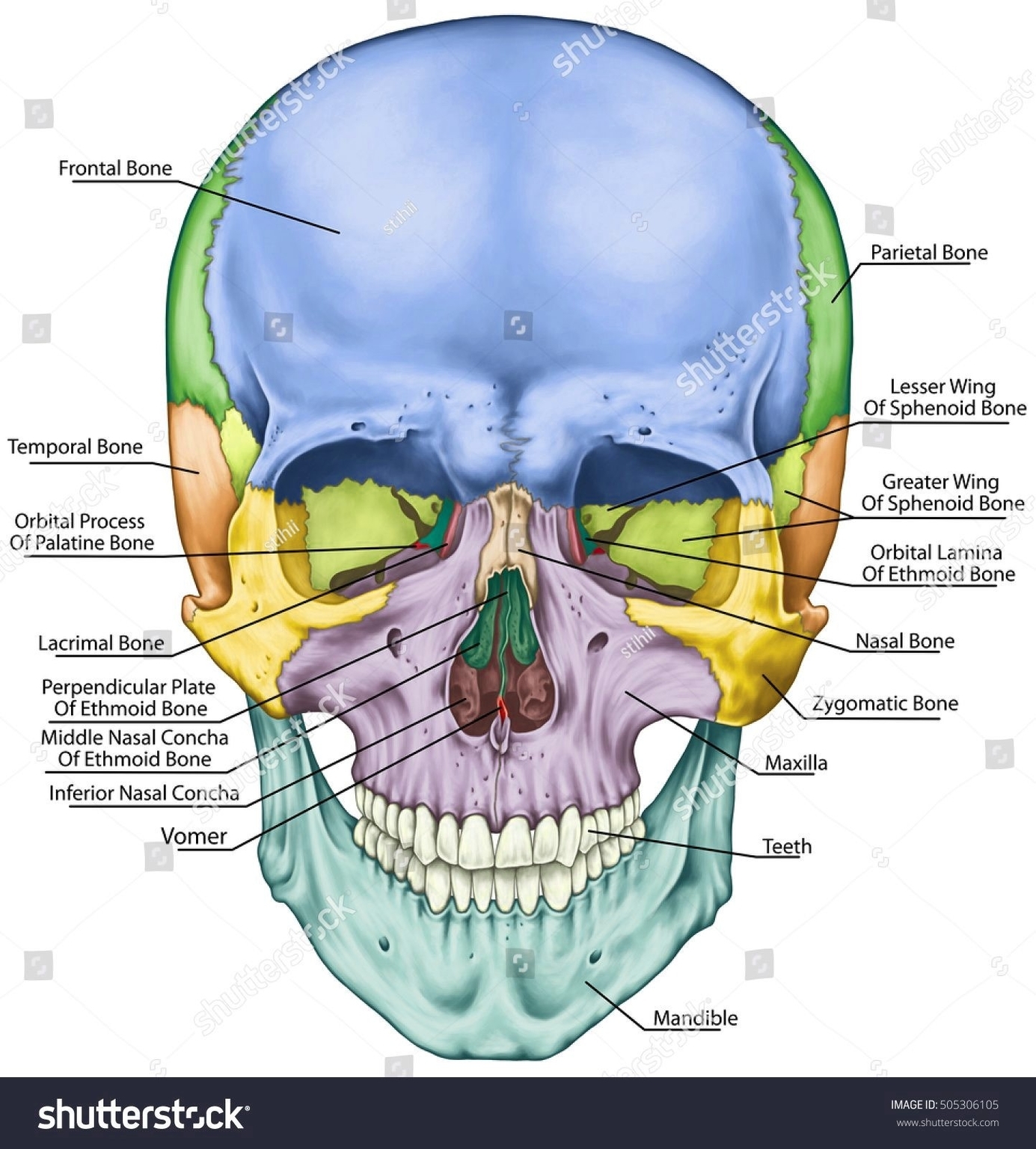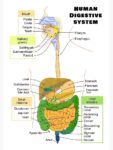The human skull, a marvel of biological engineering, serves as a protective casing for the brain and supports the structures of the face. It is composed of 22 bones (or 29, including the inner ear bones and hyoid bone) which are mostly connected together by ossified joints, known as sutures.
The skull is divided into two main parts: the cranium (neurocranium) and the facial skeleton (viscerocranium). The cranium, the part that contains the brain, is globular and relatively large in comparison with the face. The facial skeleton includes the bones of the face and jaws.
Cranium
The cranium consists of eight bones: the occipital, two temporal, two parietal, sphenoid, ethmoid, and frontal. The occipital bone forms the base of the cranium and has a central opening, the foramen magnum, to admit the spinal cord. The parietal and temporal bones form the sides and uppermost portion of the dome of the cranium, and the frontal bone forms the forehead. The cranial floor consists of the sphenoid and ethmoid bones.
Facial Skeleton
The facial skeleton comprises 14 bones: the vomer, two inferior nasal conchae, two nasal, two maxillae, mandible, two palatine, two zygomatic, and two lacrimal. The maxillary bones form the upper jaw, and the mandible forms the lower jaw. The zygomatic bones, also known as cheekbones, join with the temporal and maxillary bones to form the zygomatic arch below the eye socket. The nasal cavity is formed by the vomer and the nasal, lachrymal, and turbinate bones.
utures
In the human skull, the most significant sutures are the coronal suture (between the frontal and parietal bone), the sagittal suture (dividing both the parietal bones), and the lambdoidal suture (running horizontally between the occipital bone and both parietal bones). These sutures are formed by the human skull bones and are loose in infants but fuse together with age.
Function
The primary function of the skull is to protect the brain, the most vital organ in the human body. The brain is almost entirely enclosed by the neurocranium, with the exception of the foramen magnum and other foramina at the skull base, which serve as entry and exit points for blood vessels and cranial nerves. Additionally, the skull provides support for all



